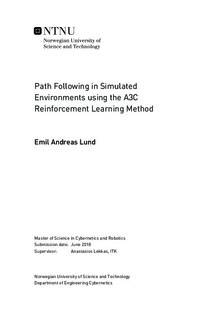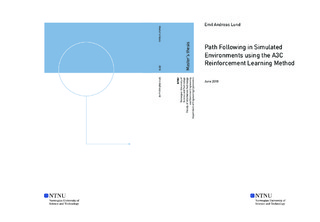| dc.description.abstract | Using reinforcement learning as a part of a Guidance, Navigation and Control (GNC) system is a relatively unexplored field. This thesis explores the use of deep reinforcement learning in a path following control algorithm in a realistic simulated environment. A reinforcement learning method called the Asynchronous Advantage Actor-Critic (A3C) method has been implemented using artificial neural networks to model the learning, making it \textit{deep} reinforcement learning. In addition, the software needed to use the V-REP robot simulator together with the A3C algorithm was developed. This was used to successfully learn to control a vehicle model in a path following situation in the V-REP simulator. In addition, the algorithm was used to learn to control a much simpler ship model simulated without V-REP. It was found that the learned behavior from the ship model could be transferred and used to control the vehicle model in the more complex environment, substantially speeding up the total time of learning process for the vehicle. | |

